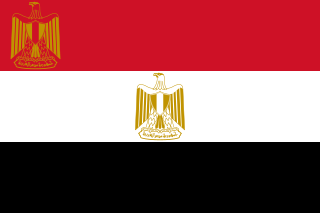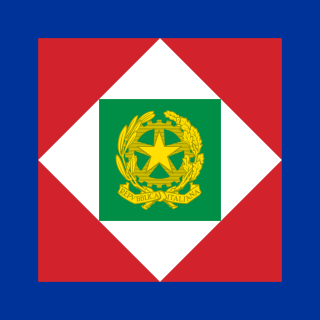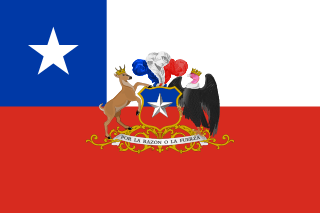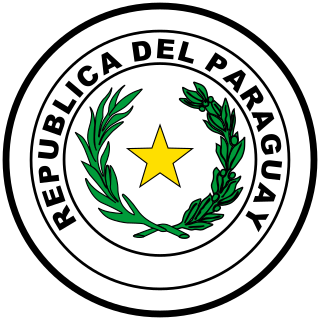
The president of France, officially the president of the French Republic, is the executive head of state of France, and the commander-in-chief of the French Armed Forces. As the presidency is the supreme magistracy of the country, the position is the highest office in France. The powers, functions and duties of prior presidential offices, in addition to their relation with the prime minister and Government of France, have over time differed with the various constitutional documents since the Second Republic.

The Twenty-second Amendment to the United States Constitution limits the number of times a person is eligible for election to the office of President of the United States to two, and sets additional eligibility conditions for presidents who succeed to the unexpired terms of their predecessors. Congress approved the Twenty-second Amendment on March 21, 1947, and submitted it to the state legislatures for ratification. That process was completed on February 27, 1951, when the requisite 36 of the 48 states had ratified the amendment, and its provisions came into force on that date.

The president of Argentina, officially known as the president of the Argentine Nation, is both head of state and head of government of Argentina. Under the national constitution, the president is also the chief executive of the federal government and commander-in-chief of the armed forces.

The president of Colombia, officially known as the president of the Republic of Colombia or president of the nation is the head of state and head of government of Colombia. The office of president was established upon the ratification of the Constitution of 1819, by the Congress of Angostura, convened in December 1819, when Colombia was the "Gran Colombia". The first president, General Simón Bolívar, took office in 1819. His position, initially self-proclaimed, was subsequently ratified by Congress.

The president of the Philippines is the head of state, head of government and chief executive of the Philippines. The president leads the executive branch of the Philippine government and is the commander-in-chief of the Armed Forces of the Philippines.

The Senate of the Philippines is the upper house of Congress of the bicameral legislature of the Philippines with the House of Representatives as the lower house. The Senate is composed of 24 senators who are elected at-large under plurality-at-large voting.

The President of Egypt is the executive head of state of Egypt and the de facto appointer of the official head of government under the Egyptian Constitution of 2014. Under the various iterations of the Constitution of Egypt following the Egyptian Revolution of 1952, the president is also the supreme commander of the Armed Forces, and head of the executive branch of the Egyptian government. The current president is Abdel Fattah el-Sisi, who has been in office since 8 June 2014.
Elections in the Philippines are of several types. The president, vice-president, and the senators are elected for a six-year term, while the members of the House of Representatives, governors, vice-governors, members of the Sangguniang Panlalawigan, mayors, vice-mayors, members of the Sangguniang Panlungsod/members of the Sangguniang Bayan, barangay officials, and the members of the Sangguniang Kabataan are elected to serve for a three-year term.

The Commission on Elections, abbreviated as COMELEC, is one of the three constitutional commissions of the Philippines. Its principal role is to enforce all laws and regulations relative to the conduct of elections in the Philippines.

The vice president of the Philippines is the second-highest official in the executive branch of the Philippine government and is the first in the presidential line of succession. The vice president is directly elected by the people and is one of only two nationally elected executive officials, the other being the president.
Sexenio is the popular term for the term of office on the President of Mexico. The president is limited to a single six-year term, and no one who holds the office even on a caretaker basis is permitted to run for or hold the office again. It is one of the country's most important political institutions because it is one of the few significant limitations on executive power in Mexico, which is strong at local, state, and national levels. The sexenio is seen as a reaction to the failed experiment of re-election in Mexico during part of the Porfiriato era (1876–1911). In addition to restricting the presidency, state governors also face this restriction; no one elected as a governor may ever hold the post again, even on an interim basis.

The president of Italy, officially president of the Italian Republic is the head of state of Italy. In that role, the president represents national unity, and guarantees that Italian politics comply with the Constitution. The president is the commander-in-chief of the Italian Armed Forces and chairs the High Council of the Judiciary. A president's term of office lasts for seven years. The incumbent president is former constitutional judge Sergio Mattarella, who was elected on 31 January 2015, and re-elected on 29 January 2022.
This list of presidential elections in the Philippines includes election results of both presidential and vice presidential elections since 1899 with the candidates' political party and their corresponding percentage.

The president of Chile, officially known as the President of the Republic of Chile, is the head of state and head of government of the Republic of Chile. The President is responsible for both government administration and state administration. Although its role and significance have changed over time, and its position and relations with other actors in the national political organization have also evolved, it remains one of the most prominent political offices in the country. It is also considered one of the key institutions that form the "Historic Constitution of Chile," and is crucial to the country's political stability.

The President of Nepal is the head of state of Nepal and the commander-in-chief of the Nepalese Armed Forces.

The vice president of Paraguay is the person with the second highest position in the executive branch of the Paraguayan government, after the president of Paraguay. The position of vice president was created with the Constitution of 1844, although it was the title given to ex officio members temporarily replacing the elected president in case of death or absence, and was not a position elected alongside the president.
The Constitution of the Philippines is the constitution or the supreme law of the Republic of the Philippines. Its final draft was completed by the Constitutional Commission on October 12, 1986, and ratified by a nationwide plebiscite on February 2, 1987.
Political dynasties in the Philippines are typically characterized as families that have established their political or economic dominance in a province and have coordinated efforts to move on to involvement in national government or other positions. Political dynasties usually have a strong, consolidated support base concentrated around the province in which they are dominant. Members of such dynasties usually do not limit their involvement to political activities, and may participate in business or cultural activities.

The vice-president of Ghana is the second-highest officer in the Government of Ghana. The vice-president, together with the President of Ghana, is directly elected by the people through popular vote to serve a four-year term in office. The vice-president is the first person in the presidential line of succession, and would ascend to the presidency upon the death, resignation, or removal of the president. The current vice-president is Mahamudu Bawumia, who took office on 7 January 2017, under President Nana Akufo-Addo.




















